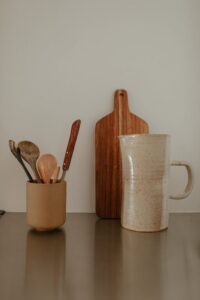How to Start a Small Herb Garden Indoors: A Simple Guide

Starting an indoor herb garden is a rewarding way to bring fresh flavors into your kitchen and brighten up your living space. Whether you have a large window sill or a small corner, growing herbs indoors is achievable, even for beginners. In this guide, we’ll walk you through everything you need to know to start your own small indoor herb garden.
Why Grow Herbs Indoors?
Indoor herb gardening offers many benefits:
– Freshness: Pick herbs whenever you need them for cooking.
– Cost-effective: Save money by growing your own rather than buying packaged herbs.
– Convenience: Have your herbs close at hand regardless of the season.
– Air quality: Many herbs help improve indoor air quality.
– Therapeutic: Gardening is relaxing and fulfilling.
Choosing the Right Herbs
Some herbs thrive better indoors due to their size, light requirements, and ease of care. Here are some popular and beginner-friendly options:
– Basil: Requires plenty of sunlight; great for cooking.
– Parsley: Tolerant of lower light; versatile herb.
– Chives: Hardy and pleasant-smelling.
– Mint: Grows quickly; keep separate to avoid overrunning.
– Thyme: Prefers sunny spots; drought-tolerant.
– Oregano: Needs good light; great for Mediterranean dishes.
– Cilantro: Likes cooler temperatures and indirect light.
Start with 3 to 5 types to keep your setup manageable.
Selecting Containers
You can use many types of containers, but consider these factors:
– Size: Small pots (4-6 inches in diameter) work well for most herbs.
– Drainage: Ensure your pots have drainage holes to avoid waterlogging roots.
– Material: Terracotta pots breathe well, but plastic ones retain moisture longer.
– Repurposed containers: Tea tins, mason jars, or small baskets lined with plastic can be charming options.
Choosing Soil
Use a high-quality potting mix designed for indoor plants. Avoid garden soil, which can be too dense and may contain pests. Look for one that:
– Drains well
– Retains moisture without being soggy
– Is rich in organic matter
You may also add perlite or vermiculite for better aeration.
Location & Light Requirements
Fresh herbs generally need 6 to 8 hours of sunlight a day. Here’s how to pick the best spot:
– Windowsill: South or west-facing windows get the most sunlight.
– Supplemental lighting: If natural light is limited, consider using grow lights.
– Rotate pots: To encourage even growth, turn your pots every few days.
Be mindful that too much direct afternoon sun through glass can sometimes scorch tender leaves. If this happens, use sheer curtains to diffuse the light.
Watering Your Herb Garden
Proper watering is crucial:
– Check soil moisture: Stick your finger about an inch into the soil. Water if it feels dry.
– Avoid overwatering: Water only when the topsoil is dry. Overwatering causes root rot.
– Water evenly: Use a watering can with a narrow spout to direct water to the soil, avoiding wetting leaves.
– Drain excess: Empty any water that collects in trays to prevent stagnant water.
Planting Your Herbs
You can start herbs indoors from seeds, seedlings, or cuttings.
Starting from Seeds:
– Fill containers with potting mix.
– Plant seeds according to package instructions (usually ¼ to ½ inch deep).
– Mist soil lightly to keep moist.
– Cover with plastic wrap or a humidity dome to retain moisture until germination.
– Place in a warm, well-lit area.
Using Seedlings or Transplants:
– Gently loosen roots and plant at the same depth in your pots.
– Water thoroughly.
Growing from Cuttings:
– Take 4-6 inch cuttings from a healthy herb plant.
– Remove lower leaves and place in water until roots develop.
– Transfer to soil once roots are 1-2 inches long.
Caring for Your Herbs
– Fertilizing: Use a diluted, balanced liquid fertilizer every 4-6 weeks.
– Pruning: Regularly pinch off tips to encourage bushier growth and prevent flowering.
– Pest control: Keep an eye out for aphids or spider mites. Wipe leaves gently or use insecticidal soap if necessary.
– Humidity: Indoor air can be dry, especially in winter. Mist herbs occasionally or place a tray of water nearby.
Harvesting Tips
– Harvest herbs in the morning for best flavor.
– Use scissors to snip leaves or stems just above a leaf node.
– Avoid removing more than one-third of the plant at a time to keep it healthy.
Troubleshooting Common Problems
| Problem | Cause | Solution |
|————————-|——————————–|————————————|
| Yellowing leaves | Overwatering or poor drainage | Adjust watering, check pot drainage |
| Leggy, stretched plants | Insufficient light | Move to brighter spot or use grow lights |
| Wilting | Underwatering or root issues | Water properly; inspect roots |
| Pest infestation | Dry air or crowded plants | Increase humidity; remove pests |
Final Thoughts
Growing a small herb garden indoors is easier than you might think. With the right herbs, care, and spot in your home, you’ll enjoy fresh, aromatic additions to your meals and a touch of greenery indoors. Start small, be patient, and watch your herb garden flourish!
Happy gardening!




